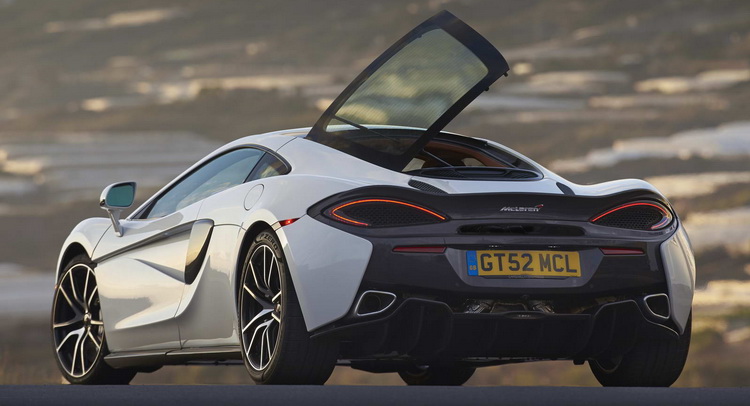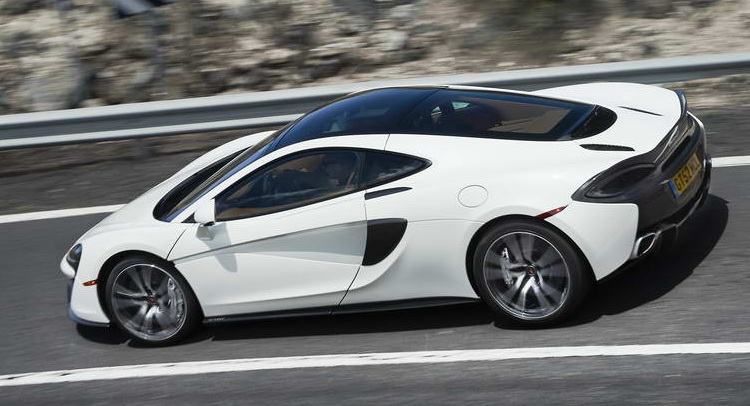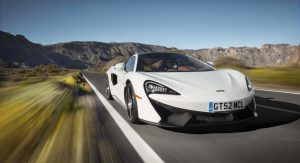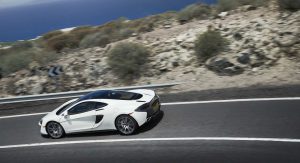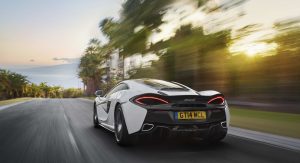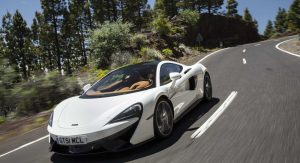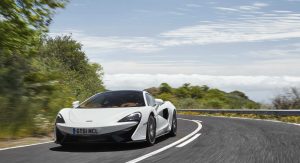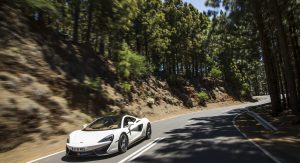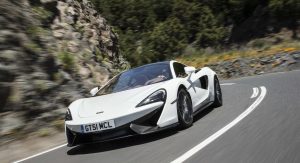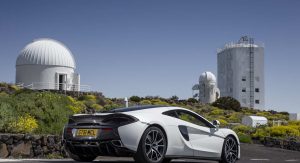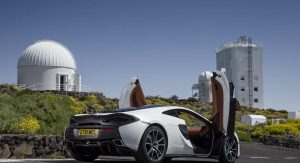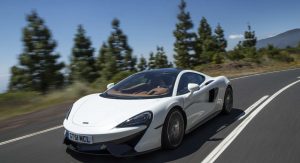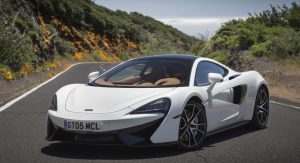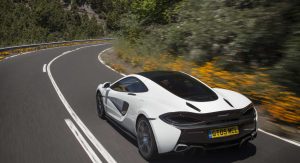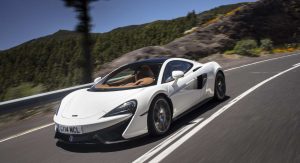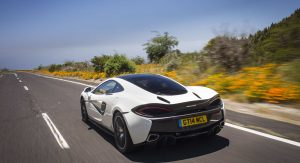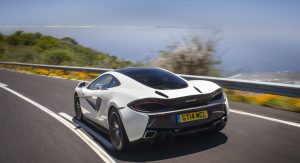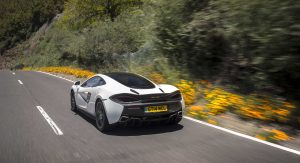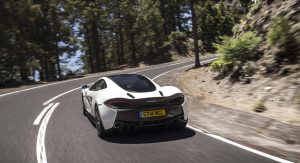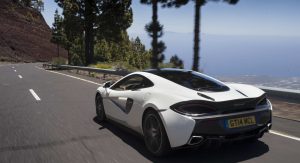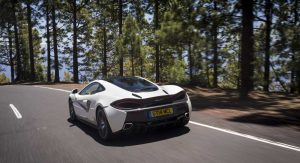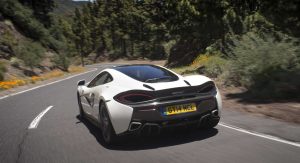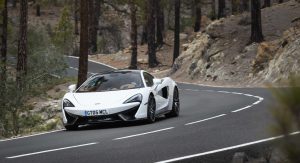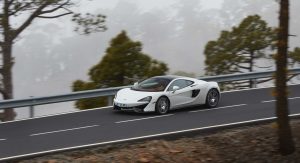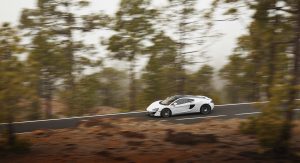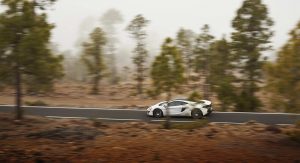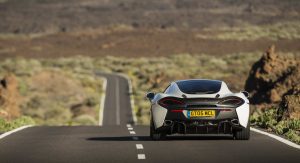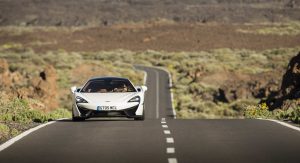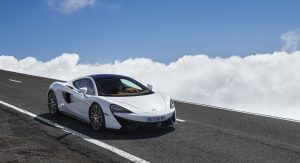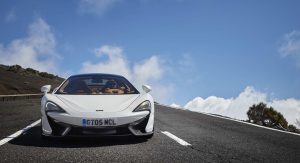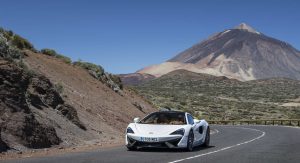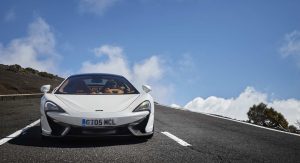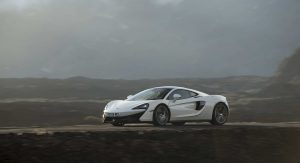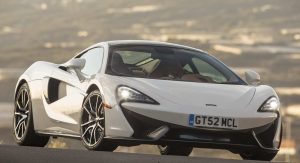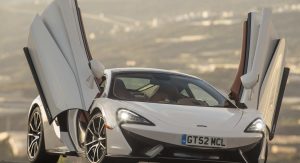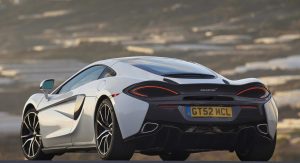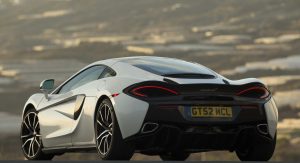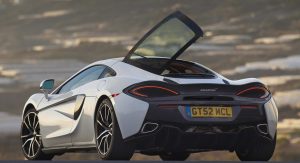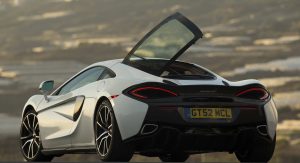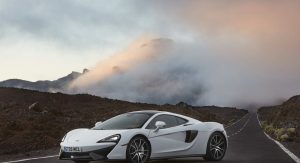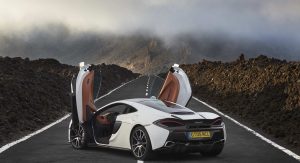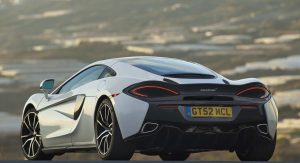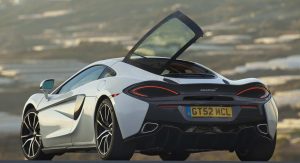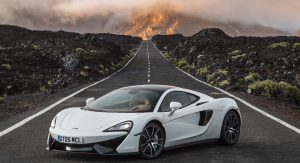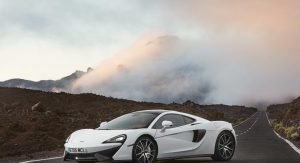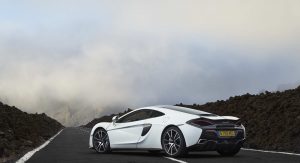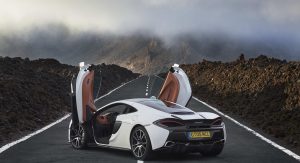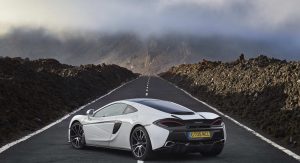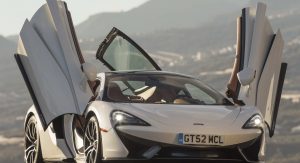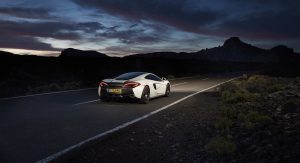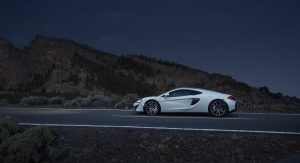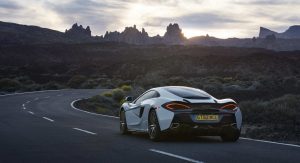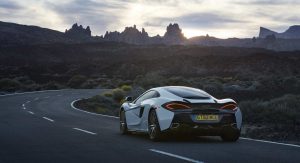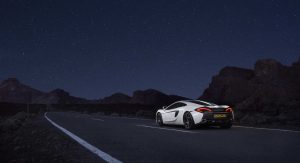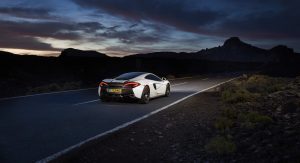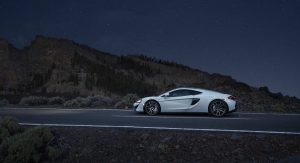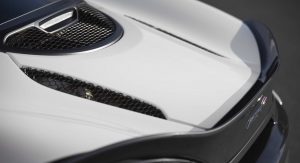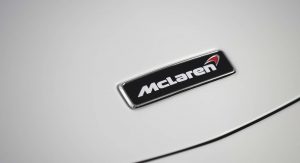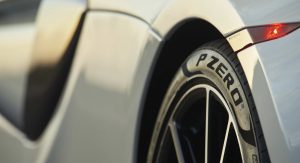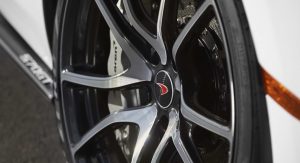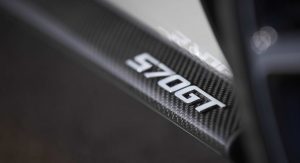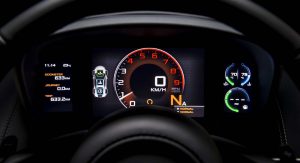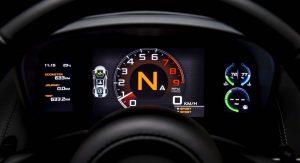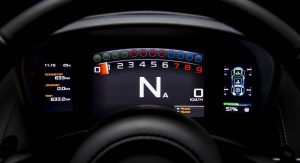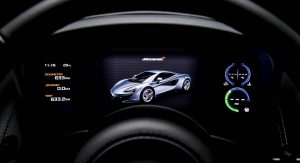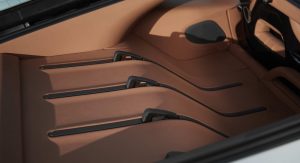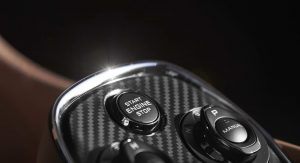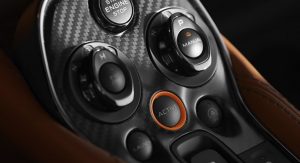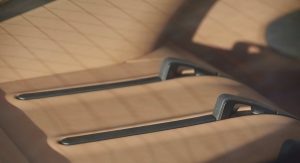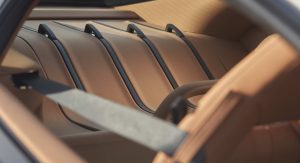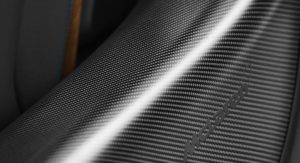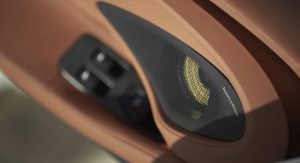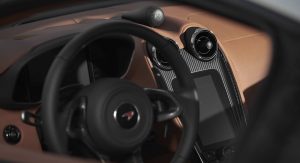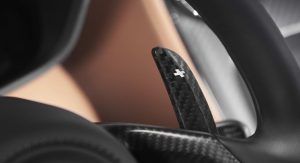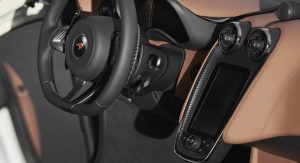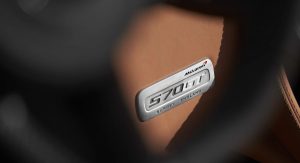The official line is that the 570GT is “the McLaren of GTs”, yet the driving experience suggests there’s a strong case for labeling it “the GT in McLaren’s range”.
Paradoxically, you can argue that both statements are true. It all depends on where you stand on weeding out the 570GT’s true rivals and, crucially, where you draw the line between a GT and a sports car.
The morning mist has vanished, the car is waiting in the hotel’s parking lot and the twisties of Mount Teide, Spain’s highest, which will take us (literary) above the clouds are beckoning. Let’s pop the dihedral door open and do what we were invited to. Game on.
WHAT’S THE STORY, MORNING GLORY?
There’s a pun in the title and it is most definitely intended. Like the S, the GT has an array of buttons and two rotary controls on the center console that allow you to trim the suspension, powertrain and transmission to your liking. Thankfully, they are not tied to each other, so you can, say, have the suspension in Sport mode and the engine on Track or vice versa – and anything in between.
McLaren says it has the highest percentage of customers, among its competitors, that actually take their cars to the track. At the same time, they point out that the 570GT has some layers of the 570S full-on sports traits peeled off to make it more comfortable. To accomplish that, they made the steering a bit slower (just two percent), softened the spring rates by 15 and 10 percent front and rear respectively, put iron discs as standard and the ceramics on the options list and the P Zeros are not the Corsas of the S but have been developed by Pirelli to reduce noise, and the exhaust is quieter.
Is that all? Not quite. They also redesigned the rear, elongating the roof and, in the process, ditching the rear buttresses in favor of a sideways-opening glass hatch that allows access to a 220 lt (7.8 cubic feet) trunk that’s added to the 150 lt (5.2 cu.ft.) front boot for total capacity of 370 lt (13.1 cu.ft) – more than a Ford Focus, as the company was quick to point out. Plus, the GT comes with a full, 15 percent tinted glass moon roof as standard.
HOT AND CRISPY
The dihedral door now features a soft close function, which is nice, and an extra storage pocket. Fit and finish is top notch, all stitched leather and carbon, there’s a glovebox and an extra stowing space under the armrest and… straight away we hit trouble.
First off, the powered seats controls are buried in a very tight space at the right side, right between the cushion and the transmission tunnel. Then, they are counter-intuitive, making you move the seat backwards instead of forwards and so on before you finally find the perfect seating position.
The steering wheel is completely devoid of any switches, McLaren opting for traditional stalks instead for the turn signals and wipers. No fiddling there, no way you can fumble anything even if you jump in straight out of a Camry. Make sure you tick the sports seats option, though, for the standard seats do not offer sufficient support. Put in the roof bling, too, that will be available shortly; that glass roof looks good but the tint is not enough to protect you if you live anywhere with a decently sunny weather.
I suspect this is not the reason I’m hot as we climb up the mountain, Pirellis glued to the utterly smooth tarmac, trying to keep up with the dark grey 650S in front. That’s Maurizio, a McLaren test driver who was kind enough to lead at what he considers a “normal”, that is not slow but not flat-out, pace. Everything’s set in Sport because, well, that’s what everyone says is the best mode for road use.
Could do with less roll in the corners, so let’s turn that knob to the right and select Track. That’s more like it. Why not the powertrain, too? The difference is felt immediately. The 570 PS twin-turbo V8 is the same as the S and I wouldn’t ask for one pony more. There’s turbo lag, though, and you have to wait until 3.4-4.0k rpm for that kick in the head and the 570GT to go ballistic as it eats up the short straights in no time at all. The GT is, officially, 0.2 seconds slower in the 0-100 km/h (0-62 mph) sprint than the S. Good to know but, hey, 3.4 seconds is fine by me. The seven-speed dual clutch box is more than up to the task, too, and I do not mind the paddles that turn with the wheel.
Apart from the pace, what’s truly amazing is the steering that’s fast and extremely accurate without being twitchy. Going for an electrohydaulic, instead of all-electric, rack was an excellent choice.
Straight out of a second-speed hairpin, pedal to the metal, hear the turbos whistle and fizzle, grab the right paddle, bang, third, repeat until it nudges the limiter, bang, fourth, this is truly supercar performance. Corner coming up, downshift, brake hard, and there’s another issue. All cars are fitted with ceramics and “progressive” is not on the menu. No reassuring initial bite, just a dead first travel and then you get an immense stopping power. It’s like an on-off switch, though, something that was supposedly solved with the latest generation discs and pads. The irons could be better in that respect. No need to tick that box then. Better save the cash for the sports exhaust because, frankly, the engine note is nothing to write home about.
What makes these faults stand out is how great the rest of the 570GT is. It’s fun, will let you throw it around and won’t bite back even if you step out of line, the rack is quick enough to catch the powerslide if you insist on unsettling the rear end, the carbon chassis is phenomenally rigid, the suspension is not the trick hydraulic of the 650S but it’s wonderfully sorted out.
THE MACCA THAT WENT UP A MOUNTAIN AND CAME DOWN…
Hard to finish that one, it is. Sussing out a 675LT (one was also available, by the way, and it was mental) is easy: it is focused on driving thrills and to hell with everyday nuances. With the Sports Series, McLaren has done the opposite.
Back to where we started. The Porsche 911 Turbo is on par when it comes to pace and it’s got two small rear seats. It lacks the wow factor, though, that comes with that shape, as it’s too generic 911. The Ferrari 488 GTB is a rung above, doing battle with the 650S, and so is the Lambo Huracán. Only the new Audi R8 comes close to the McLaren. A superb sports car, too, but the one it has to tango with is the 570S.
As we head for dinner, I ask if there is going to be a 540GT, in the veins of the C. No, it won’t. Easy from an engineering point, a tough sell on a clientele that has shown no interest in such a thing. If anything, McLaren has proved that it listens to its customers and the Press. It’s been only six years since the very first modern model, the MP4-12C, rolled out and was deemed too ordinary to challenge the Italians.
At long last, an epiphany! The Occam’s razor principle: Among competing hypotheses, the one with the fewest assumptions should be selected. It’s a (subjectively) more resolved shape than the S with added practicality thrown in for good measure. Case closed.




